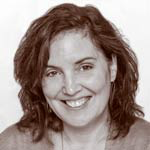Is the definition of leadership changing? And what role should leadership and vision play when planning events?
Mary Beth McEuen has spent a lot of time thinking about those questions — during her 27 years at Maritz, where she eventually served as vice president and executive director of The Maritz Institute; as she studied for her master’s degree in organizational leadership; and now as founder and managing director of Innergy, a consultancy focused on what she calls “a next-generation approach to leadership development.”
During a General Session presentation at the PCMA Education Conference in St. Louis in June, McEuen will outline the emerging contours of strategic leadership, which she says involve empathy, encouragement, and building trust. Underpinning her vision is the four-drive theory first articulated by Harvard Business School professor Paul R. Lawrence, who posited that humans are motivated by four drives: to acquire, to bond, to learn, and to defend. These drives, he said, manifest themselves in different ways in the workplace.
How do emerging forms of leadership and the four drives mesh with meetings and conferences? From her home in St. Louis, McEuen took a few moments to explain her ideas to Convene.
Was there a point in your career when you crossed the line from being someone who wasn’t necessarily seen as a leader to someone who was?
Yes, I remember the crossover point very clearly. It was not when people saw me differently, it was when I saw myself differently, and it came when I was heading up marketing and strategy for one of the three lines of business for Maritz. While I was in that role, a vision for a new business concept called “brand alignment” took root, based on what I considered an issue in the marketplace — the gap between who a company says they are and their branding, creating a real integrity and trust problem.
Having the vision for what that brand alignment could be, and turning that into a set of methodologies with a fabulous team, was the first time I saw myself differently. The vision was clear in my own mind, which was very different than trying to create something that is in somebody else’s mind. Unless we can get a really clear picture in our mind of what success looks like, whatever that might be, we are really just executing on somebody else’s picture. Hopefully ours is a shared vision with the other people, because that is what is going to create the greatest success — a shared picture of success, with everybody operating from that.
How do you get others to share your vision? Are there tactics you can employ?
I think we tend to spend most of our time on tactics without having spent time with visioning and strategy. Often, there’s an assumption that vision and strategy is either easy or it’s “just there,” but it’s not. What I would say is, you should spend time with key stakeholders visioning, not just the goal statements, but how to tell the story of the event. What will happen at the event? What will it look like? How will people interact with each other? What will they do when they leave the event?
Also, describe the value you’ve created. For example, did you strengthen the relationships between people at the event? Are those relationships carried beyond the event? Did [the event] strengthen the relationship with the company, or the association, or whoever sponsored the event? That social impact is value.
As you get tangible about those results, and you build them into your vision, you can start seeing how you would design an event differently, for example. There is a pretty strong paradigm on events being content-driven, but in reality, content can be distributed virtually, for the most part. A lot of the reason people spend money on face-to-face is to build their relationship to the social network. Are you trying to build the community as part of your vision, goal, or strategy?
I think some planners might say that they don’t have enough time to vision, think, and conceptualize, and that they have to jump from Point A to Point G to Point Z.
Some of the challenge is to shift the process and literally carve out the strategy. Call it a strategy session and a design session. I actually think those are two different sessions, but you could combine them into a half-day or a full day’s work. If you think about that, it’s not that big of an investment, given how much you are spending on the event. It’s so minimal.
To use one of the questions you ask your audiences: Whom do you consider to be a superb leader, and what are the qualities you admire in that person?
Well, the first person that comes to mind — and I have a lot of them — is Paul Lawrence. At the time I met him, he was 87 years old, and honestly, I’ve never seen greater vision and passion. He was with Harvard Business School for over 50 years, and upon retiring, he wrote the [2002] book Driven [How Human Nature Shapes Our Choices] with Nitin Nohria, who is the current dean of the Harvard Business School.
I met [Lawrence] when I was responsible for The Maritz Institute, and we brought the four-drive theory into the work that we were doing, because it was very science-based and we were trying to update our theory of human behavior. He passed away a couple of years ago, but Paul was a man on a mission until the very, very end. He was clearly brilliant, yet so humble and gracious, and a supreme teacher. He wanted people to understand the four-drive theory because he believed that as we implemented this different opinion of the whole human being, we would create better businesses. He wanted to leave that as a legacy: better leadership that engaged the whole person.
How might the four drives play out in meeting design?
As you embrace the whole of that, you can see that for an event, it’s not only people being there to transactionally consume content, right? That’s the drive to acquire. As you activate the drive to bond, [attendees] build relationships, and that’s real value.
You can always imagine the flip side, which is, what you are trying to avoid? You really don’t want to activate the drive to defend. You can imagine it is activated, for example, during the process of getting to an event. There can be a positive side to the drive to defend, of course, and that is if you build cohesion in your community, people will defend the community. For the most part, though, you try to prevent the drive to defend from being activated. It’s a stressor.
All of these drives are underpinned by emotion, and that is where the real richness comes into play for the [event] designer — so much of what you are trying to design is an emotional experience of the event. People are bonding with each other, laughing with each other, building relationships, building trust, generating new thinking and new ideas, and there is cooperation and even wonder, awe, and curiosity. The more you have those types of emotions throughout an event, [attendees] will leave with a distinctly different memory. That is all part of design.





